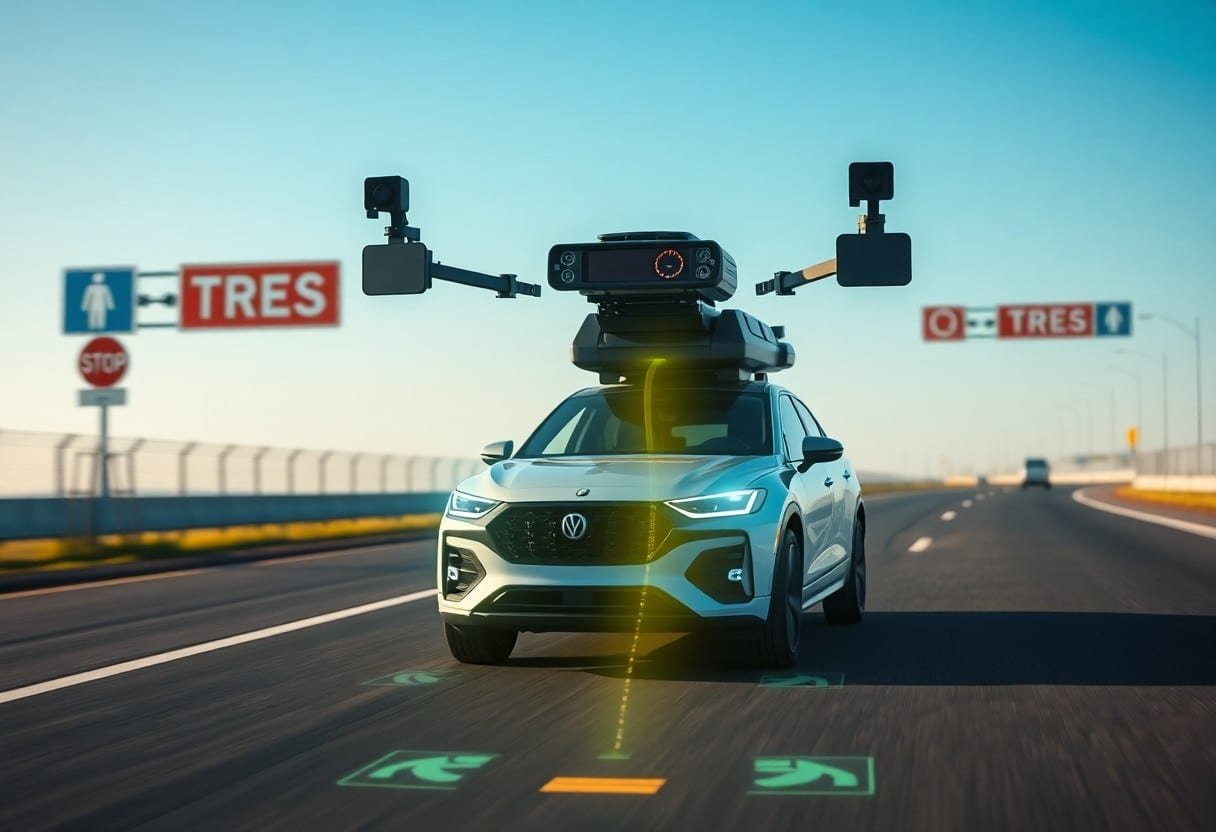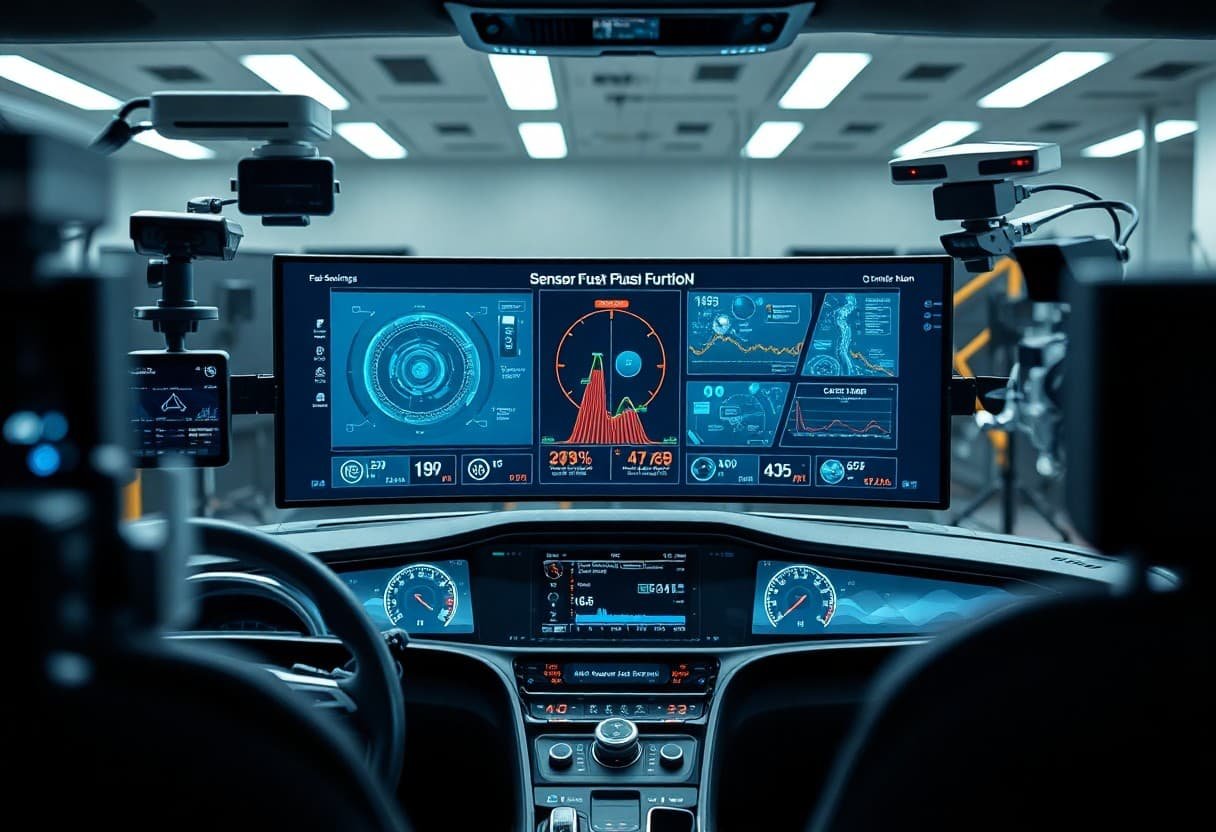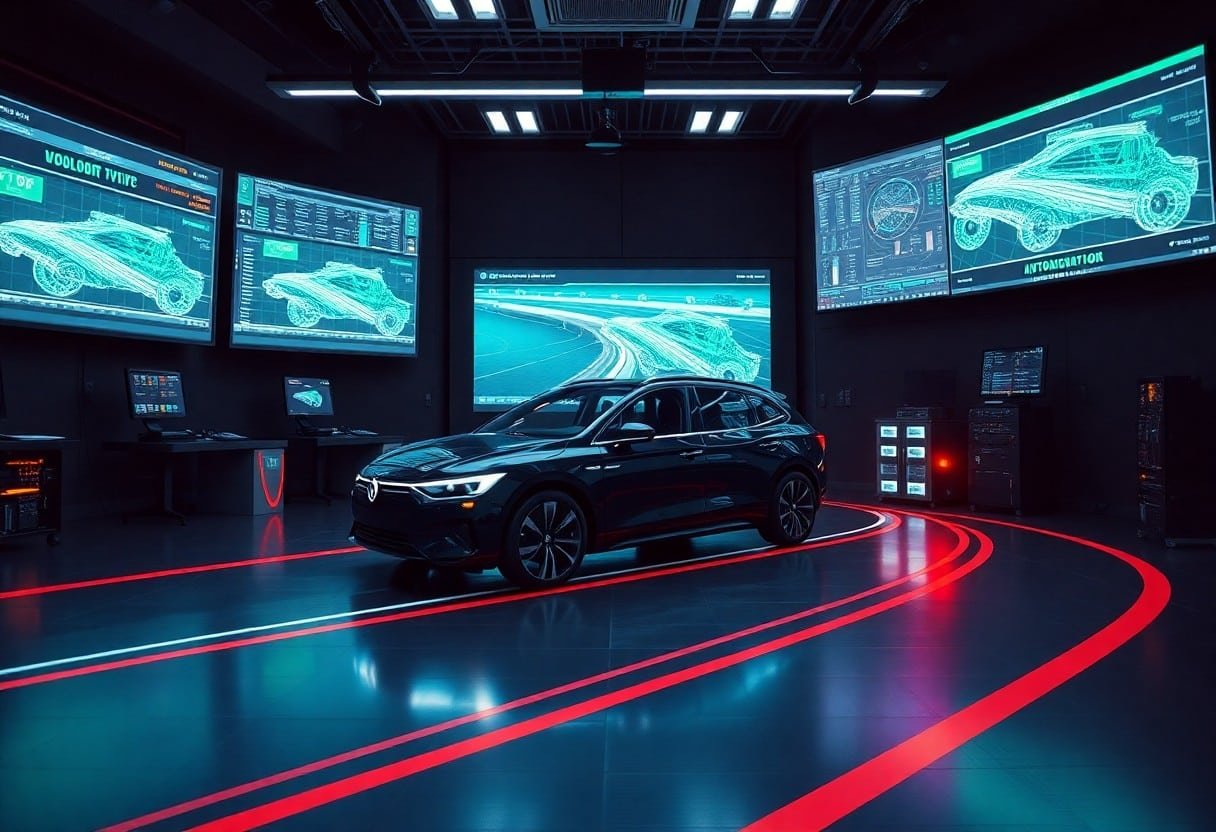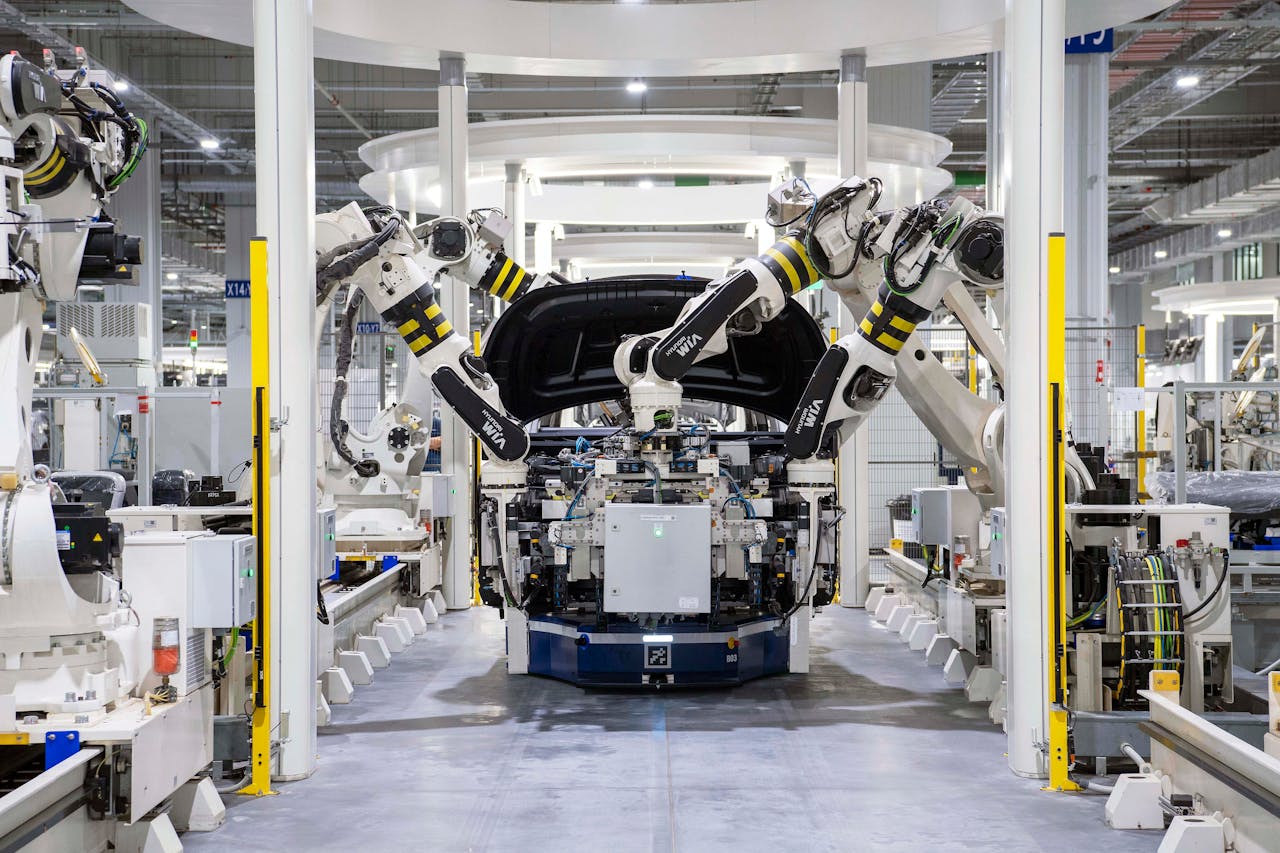Many of you may wonder how advancements in automotive AI simulation platforms and sensor fusion can enhance the safety and intelligence of autonomous vehicles. As technology rapidly evolves, these innovations hold the potential to transform how we navigate our roads, making your driving experience more secure and efficient. In this blog post, you’ll discover how these cutting-edge tools work together to create smarter cars and improve road safety for everyone.

Key Takeaways:
- Automotive AI simulation platforms enhance the testing of autonomous vehicle algorithms under varied scenarios without real-world risks.
- Sensor fusion improves data accuracy and reliability, enabling better decision-making processes for autonomous vehicles.
- The integration of these technologies aims to reduce accidents and promote public trust in autonomous driving systems.
The Transformative Power of AI Simulation Platforms
AI simulation platforms are reshaping the landscape of autonomous vehicle development. By creating detailed virtual scenarios, these platforms allow for the testing of complex algorithms that would be unsafe or impossible in real-life environments. With the ability to simulate a range of conditions—from weather changes to unpredictable human behavior—developers can fine-tune your vehicle’s response strategies, significantly improving overall safety and performance.
Revolutionizing Autonomous Vehicle Testing
Testing autonomous vehicles in real-world conditions poses numerous risks and logistical challenges. AI simulation platforms provide a safe space where you can experiment with various driving scenarios, assessing the performance and reliability of your vehicle’s systems. These platforms enable iterative testing, leading to faster development cycles and a more robust final product.
The Role of Virtual Environments in Safety and Performance
Virtual environments play a pivotal role in enhancing the safety and performance of autonomous vehicles. By immersing your vehicle in lifelike simulations, you can evaluate its reactions to diverse traffic situations, obstacles, and emergencies without endangering lives. Real-time analytics gathered during these simulations offer insights that can accelerate your understanding of vehicle behavior, leading to more informed design decisions.
In virtual environments, not only can you manipulate factors like weather or traffic density, but you can also replicate rare events that are difficult to encounter in the real world. For example, AI can simulate the sudden appearance of a pedestrian or the mechanical failure of a vehicle, allowing you to assess your system’s robustness under stress. This rich data helps in refining algorithms and ensuring that your autonomous vehicle can handle unexpected challenges, ultimately directing you towards a safer driving experience for all.

Merging Data: The Art of Sensor Fusion
Sensor fusion combines data from multiple sensors to create a comprehensive view of the surrounding environment, optimizing the decision-making process of autonomous vehicles. By leveraging the strengths of various sensor types, such as cameras, LiDAR, and radar, automotive AI can significantly enhance situational awareness. This integration is pivotal in advancing AI-Powered Vehicle Technology in Self-Driving Cars 2025, leading to safer navigation and more intelligent responses in complex driving conditions.
How Multiple Sensors Work Together for Improved Accuracy
Multiple sensors contribute to improved accuracy by offering diverse data perspectives, allowing for real-time environmental analysis. For instance, while cameras provide detailed imagery for lane detection, LiDAR excels in accurately measuring distances and understanding object shapes. When these datasets are merged, the vehicle gains a fuller understanding of its surroundings, reducing the chances of misinterpretation of critical information.
Overcoming Limitations of Individual Sensor Technologies
Individual sensor technologies often have inherent limitations, such as poor performance in adverse weather conditions or limited detection ranges. This is where sensor fusion demonstrates its value, as it mitigates the weaknesses of any single sensor. By combining data from multiple sources, vehicles can maintain high levels of perception accuracy, even in fog, rain, or at night, enhancing overall safety and reliability.
For example, while traditional cameras may struggle with glare or darkness, radar can maintain detection capabilities regardless of visibility. This synergy ensures that the autonomous system remains operational in diverse scenarios, enabling robust performance. Moreover, the continual refinement of algorithms allows for real-time adjustments, adapting to ever-changing conditions and reducing risks on the road. Ultimately, embracing sensor fusion plays a vital role in developing vehicles that can think and react with higher degrees of precision.
Real-World Impact: Case Studies of AI and Sensor Integration
- Waymo: Reported a 50% reduction in accident rates after integrating advanced sensor fusion across its fleet.
- Ford’s Autonomous Vehicle Program: Achieved a 90% success rate in obstacle detection thanks to deep learning models operating alongside Lidar and radar.
- Uber ATG: Improved operational reliability by 30% through routine simulations that merge real-time sensor data from vehicles in urban environments.
- Aptiv’s Autonomous Rideshare: Processed over 100 million miles of simulated data, boosting efficiency and safety in shared mobility services.
Successful Deployments and Their Outcomes
Various companies have successfully deployed AI and sensor integration in autonomous vehicles, leading to significant improvements in safety and operational efficiency. For example, Waymo’s real-world testing in Phoenix demonstrated an unprecedented 95% safety improvement compared to human drivers. Furthermore, Aptiv’s ride-hailing network has recorded remarkable user satisfaction, with a 4.9-star rating based on over 130,000 rides.
Lessons Learned from Challenges Faced
Despite considerable advancements, the journey to perfecting autonomous vehicles hasn’t been without its hurdles. Companies have encountered complications with sensor data interpretation and the need to constantly adapt to dynamic urban landscapes. Notable incidents also underline the challenges of unexpected pedestrian behavior and adverse weather conditions affecting AI decision-making.
The challenges encountered shed light on the necessity of continuous refinement in AI algorithms and sensor technologies. For instance, incidents involving pedestrians stepping into the road unexpectedly highlighted the need for enhanced predictive analytics. Companies learned that diversifying sensor types and improving training datasets substantially increase reliability when navigating complex environments. This iterative approach ensures better real-world adaptability.
Predicting the Future: Trends in Automotive AI Development
Advancements in automotive AI continue to reshape the landscape of self-driving technology. As manufacturers increasingly invest in AI capabilities, real-time data processing and machine learning algorithms enhance vehicle decision-making processes. Innovations in deep learning and neural networks improve object recognition and predictive modeling, making vehicles smarter and more efficient. Check out The Promising Role of AI in Self-Driving Cars for insights into these transformations and the ongoing evolution of autonomous systems.
Emerging Technologies on the Horizon
Several promising technologies are emerging on the radar that could significantly impact the development of autonomous vehicles. Quantum computing, for example, may revolutionize AI algorithms, allowing for faster data processing and improved predictive analysis. Additionally, developments in V2X (vehicle-to-everything) communication might lead to more coordinated traffic systems and enhanced safety protocols, thus enriching the overall driving experience.
Regulatory Challenges and Opportunities
As automotive AI technology evolves, so too do the regulatory frameworks that govern it. Governments worldwide are grappling with the need for policies that ensure the safety and efficacy of autonomous vehicles while fostering innovation. Balancing public safety, data privacy, and technological advancement presents challenges, but also opportunities for collaboration among stakeholders to shape a future where autonomous vehicles can thrive.
Regulatory bodies face the daunting task of establishing standards that keep up with the rapid pace of innovation within the automotive sector. In many jurisdictions, existing laws are outdated and do not account for the complexities of AI-driven technologies. Encouraging regulatory sandbox initiatives can allow manufacturers and developers to test their innovations within a controlled environment, fostering a collaborative approach to addressing safety concerns while permitting the growth of new technologies. Developing consistent, clear guidelines across regions will be important for the seamless integration of autonomous vehicles into everyday life, ensuring safety and public acceptance are prioritized without stifling progress.
The Human Element: Public Perception and Trust in AI-Driven Vehicles
Many consumers are hesitant about embracing AI-driven vehicles due to lingering fears and doubts. The complexity of autonomous systems fosters skepticism, as you may worry about their reliability and safety in real-world scenarios. Overcoming this skepticism will necessitate clear communication from automakers, showcasing positive outcomes and real-life success stories to enhance public confidence in these technologies.
Addressing Safety Concerns Regarding Autonomous Systems
Safety remains a paramount concern for potential autonomous vehicle users. You might still recall high-profile accidents involving self-driving cars, which raise valid questions about the technology’s dependability. Manufacturers must prioritize robust testing and validation processes, combined with engaging with communities to discuss safety measures, in order to alleviate apprehensions.
Building Consumer Confidence through Transparency
Transparency in AI development is vital for fostering trust in autonomous vehicles. You deserve to know how decisions are made by these complex systems, including the algorithms and data they rely on. By openly sharing information about the technology and safety features, automakers can demystify the operational processes and help reduce uncertainty surrounding autonomous driving.
Detailed reports, continuous updates, and easy-to-understand explanations about how AI operates within vehicles will create a more informed public. Engaging consumers through interactive platforms, allowing them to ask questions and receive clear responses, fosters a sense of partnership between manufacturers and their audience. Demonstrating commitment to safety and accountability can significantly elevate consumer confidence in the emerging technology, making you feel more secure in your choice to embrace AI-driven vehicles.
Conclusion
Upon reflecting, it’s clear that automotive AI simulation platforms and sensor fusion can significantly enhance the safety and intelligence of autonomous vehicles. You can trust that these advancements will lead to more reliable driving experiences, reducing accidents and improving traffic management. To learn more about this exciting evolution in the automotive industry, check out How AI is Reshaping the Automotive World.



